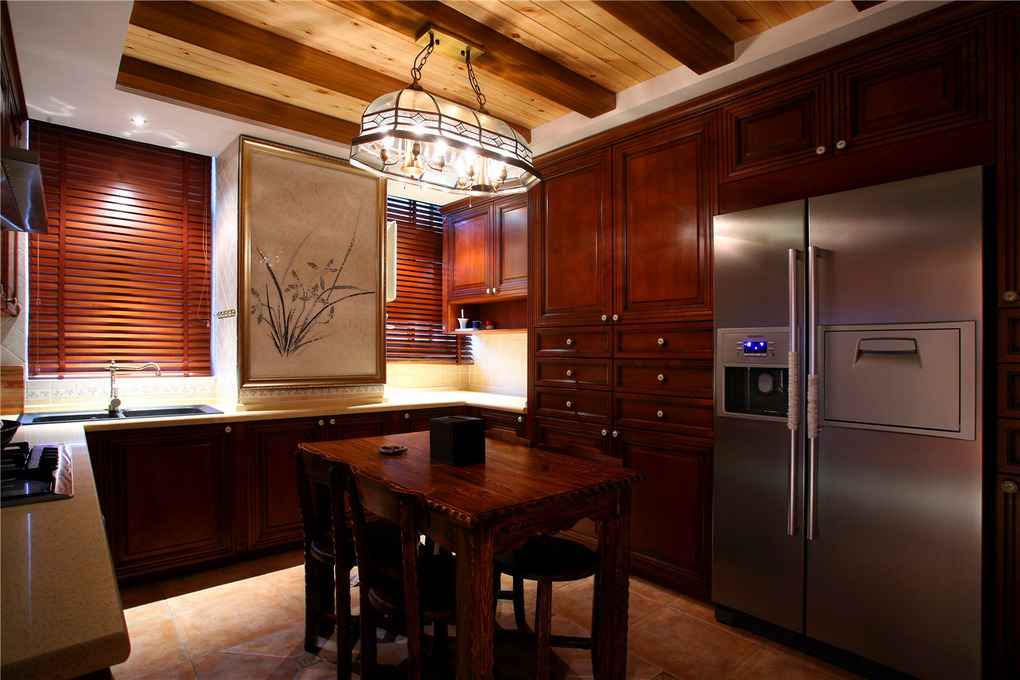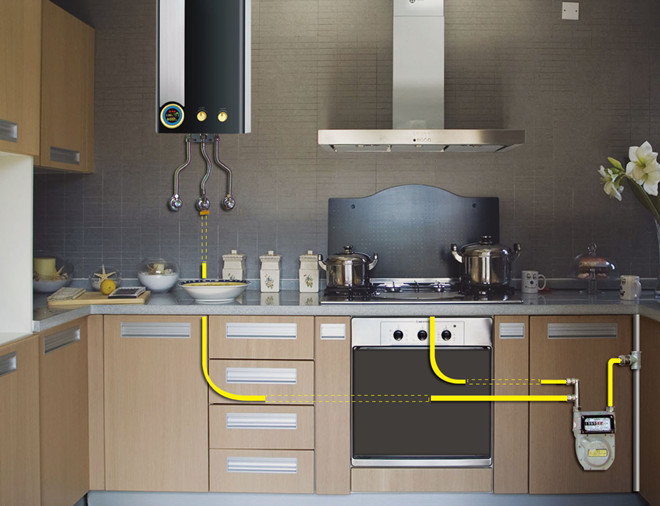
1, laying along non-combustible materials
Gas pipelines shall be laid along the walls of non-combustible materials. When meeting with other pipelines, the following requirements shall be met:
(1) When laying horizontally parallel, the net distance should not be less than 150mm;
(2) When laying in parallel vertical direction, the net distance should not be less than 100mm, and it should be located on the outside of other pipes;
(3) When cross-laying, the net distance should not be less than 50mm.
2. There is no excuse for crossing the living room and other pipelines
Due to special circumstances, the indoor gas pipeline must pass through the bathroom, toilet, ceiling (vertical wear) and living room, the pipeline should have no interface.
3, should not cross below the bucket
Indoor gas pipes should not cross below the bucket. When it is necessary to pass through, additional casing should be installed. The diameter of the casing pipe should be larger than that of the gas pipe. The gas pipe and the casing should have no connection. Both ends of the casing should extend 20 mm from the side of the water bucket.
4, do rigorous experiments
After the completion of gas pipeline installation, tightness test should be done. The test pressure is 300mm water column, and the pressure does not drop to be qualified within 3 minutes.

5ã€Dislocation with electrical equipment
The burning appliances, electric meters and electrical equipment should be set up in a wrong position. The net distance between them should not be less than 500mm. When it can not be dislocated, there should be thermal protection measures.
6, fire prevention measures in place
When the wall surface of the burning appliance installation site is wood or other flammable materials, fire prevention measures must be taken.
7, gas installation distance
The distance between the sides of various types of burning appliances and walls, buckets, door frames, etc. and the distance between burning appliances and burning appliances should not be less than 200mm. When the two burning appliances or a burning appliance and water bucket are arranged at right angles, the sum of the two sides of the inlet and outlet walls shall not be less than 1.2m.
Second gas pipe common material introduction1, stainless steel bellows
Stainless steel bellows is a kind of soft and pressure-resistant pipe fittings. It is used not only for gas transmission but also in liquid conveying systems, mainly to compensate for the mutual displacement of the connecting ports of pipes or other mechanical equipment. In addition to the soft pressure resistance of stainless steel bellows, but also has the characteristics of light weight, corrosion resistance, high temperature and other characteristics, therefore, China's current gas pipe to the direction of the development of stainless steel bellows.
2, rubber tube

The development of the rubber tube industry in China has a history of 50 years, and its application is very extensive. As with other gas pipelines, rubber pipes also have the characteristics of corrosion resistance and high temperature resistance, but their service life is much shorter than other types of pipelines. Therefore, in China, rubber pipes are rarely used for gas transportation.
3, galvanized pipe
Galvanized pipe is a type of pipe that is galvanized on the surface of the steel pipe. It is divided into hot-dip galvanizing and electro-galvanized pipe. Although the galvanized pipe is low in cost, it is easily corroded. Therefore, it is usually used for gas transportation. Galvanized pipe. This kind of galvanized pipe not only has high corrosion resistance, but also has a long service life. However, due to its excessive number of interfaces and troublesome construction, it is gradually being eliminated by the market.
4, aluminum plastic pipe

The inner and outer layers of aluminum-plastic tubes are all special polyethylene materials. They are non-toxic, environmentally friendly, and light in weight. Their "flexible and extensible" properties are very suitable for home decoration. The aluminum plastic pipe, when used as an indoor gas pipe, can withstand a strong working pressure, and since the pipe can extend for a long distance and requires fewer joints, its permeability to gas is almost zero. It is safe and reliable for the owner to use aluminum-plastic pipes as the home gas transportation route, but be careful not to buy inferior aluminum-plastic pipes because the market is susceptible to bending, deformation, and even cracking when the inferior aluminum-plastic pipe is hit. The situation threatens the safety of life and property of the owners.
Home safety is no small matter. Kitchen gas pipelines must pay special attention to the changes during the renovation. The above is related to the introduction of gas pipe installation. If you want to learn more, please pay attention to the decoration information channel of this website.
Hydroelectric renovation living room bathroom layout appliances toilet door
Marble Acp,Aluminum Composite Panel,Sandwich Panel,Curtain Wall
Fireproof ACP,High Gloss ACP Co., Lt d. , http://www.nbcompositepanel.com
![<?echo $_SERVER['SERVER_NAME'];?>](/template/twentyseventeen/skin/images/header.jpg)